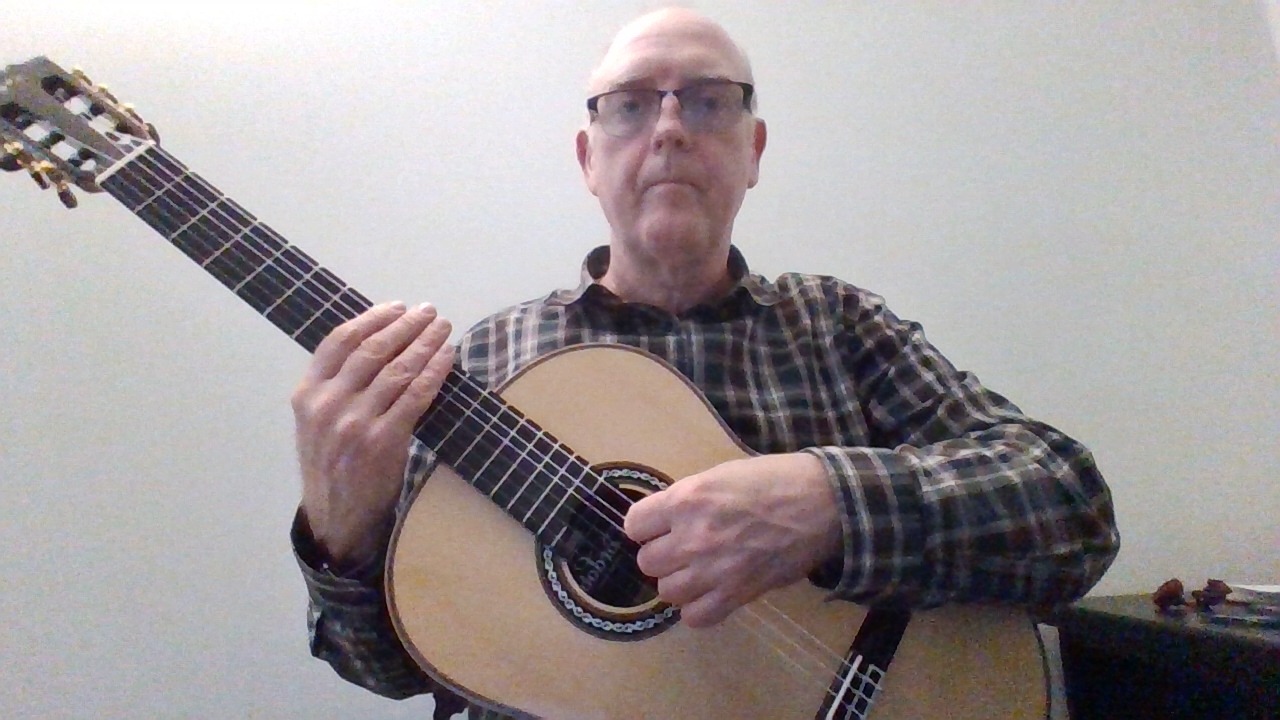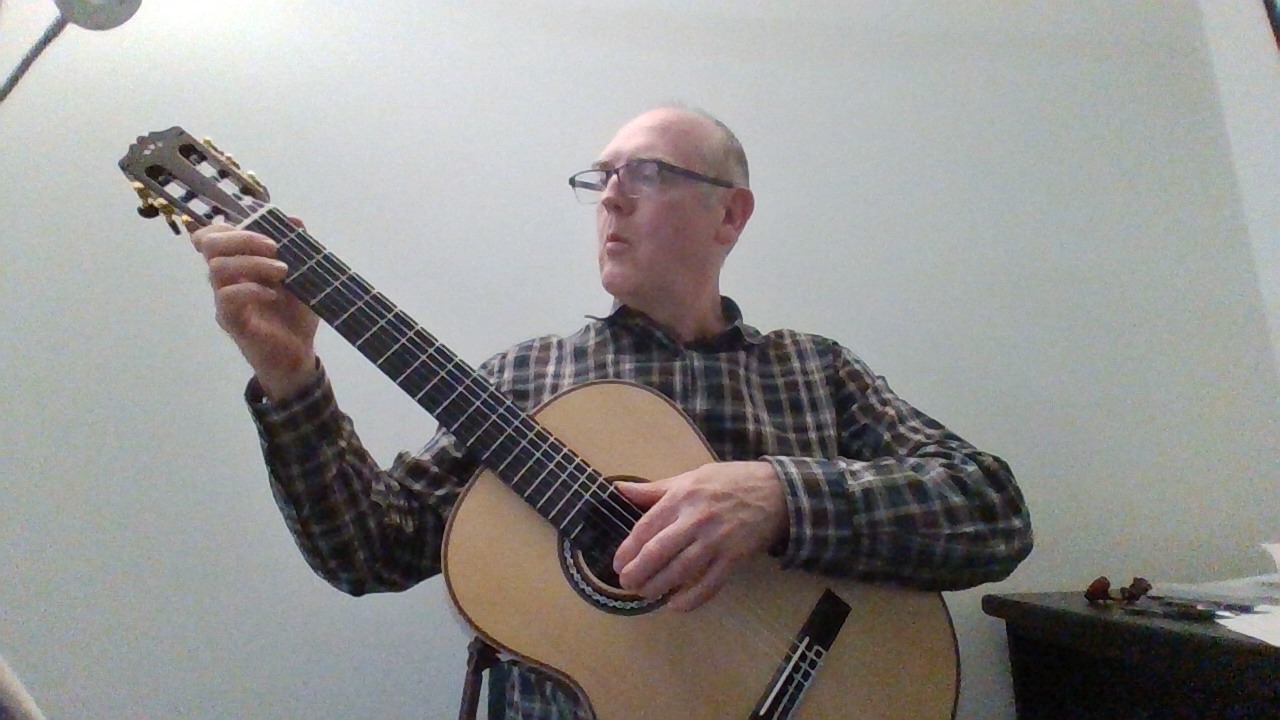Group 4

🎸🎶 Attention Classical Guitarists: Introducing the "Two Week Intensive" with Eduardo Inestal on "Interpretating Spanish Repertoire" 🎶🎸
Hola tonebuddies and fellow guitar aficionados!
We are absolutely thrilled to announce an exclusive opportunity for our community of classical guitarists: a "Two Week Intensive" course on "Interpreting Spanish Repertoire" with the world-renowned guitarist Eduardo Inestal!
This unique course is designed to provide in-depth insights into the heart and soul of Spanish guitar music. Throughout the two weeks, Eduardo will share his immense knowledge of Spanish idioms, techniques, and interpretation, enriching your playing and enabling you to truly understand and convey the passion behind this beautiful musical tradition.
During the course, participants will be immersed in the rich history and cultural context of Spanish guitar music, while receiving personalized guidance from Eduardo himself. This is truly a once-in-a-lifetime opportunity for classical guitarists looking to enhance their repertoire and expertise.
Don't miss out on this incredible opportunity to learn from a true guitar maestro. We can't wait to see you at the Two Week Intensive with Eduardo Inestal!
🎵 Happy plucking, amigos! 🎵
Details
- Sign-Up: May 11th - May 14th in an extra thread!
- Course Period: May 15th - May 26th
- Optional check-In via Zoom: tba
All Courses by Eduardo on tonebase here!
Assignments
In the assignment videos, you will:
Discover the rich tapestry of Spanish music and journey through five centuries of its history, from the Spanish vihuela school to today's contemporary compositions.
Immerse yourself in the passionate era of Spanish romanticism and nationalism, exploring the profound changes in music during the late 19th and early 20th centuries.
Understand the profound influence of popular music and folklore on classical music. Dive into the works of great composers like Gaspar Sanz, Scarlatti, Aguado, Llobet, Falla, and more contemporary authors.
Feel the rhythm and power of flamenco as you examine its influence on the classical guitar. Master the "rasgeado" technique through the music of Joaquín Turina, Joaquín Rodrigo, Ángel Barrios, and Regino Sáinz de la Maza.
Identify and interpret the typical elements of Spanish music on the classical guitar, including recurring motives and the "Cadencia Andaluza". Discover how popular song has left its mark on these timeless pieces.
Unleash the Spanish "fire" in your playing, embodying the unique character and spirit of Spanish music. Appreciate the importance of understanding the mentality of the people to truly capture the essence of their music.
This immersive course is designed to not only educate but also to inspire, as you delve deep into the soul of Spanish music and learn to interpret it on the classical guitar with authenticity and passion.
Assignment 1 - Introduction and Rasgueado
- Watch Eduardo's Introduction about Spanish Music!
- Learn about Eduardo's approach to Rasgueado (starts at 6:00)
- Share a video with Eduardo's Rasgueado Exercices with the regular Rasgueado (ami) and with the additional index finger (ami i)
- Find a piece where you can use that Rasgueado (the most famous piece for guitar for example ;). Also feel free to share great examples of Rasgueado!
88 replies
-
NEW ASSIGNMENT!!!
-
Hi, I'm a bit behind the curve so here is assignment1 with practicing rasgueado (not sure what my little finger was doing!)
-
...and for excerpt I chose the first section of a piece called Malaguena by Robin Pearson
-
Eduardo's scale exercise
-
Take 2 with metronome. On the 6th string Rasgueado and subsequent 4 string I used the 4 finger
tremolo. Thanks Eduardo.
-
Hola Eduardo, muchísimas gracias por este ejercicio de escalas! lo voy a practicar todos los días con metrónomo, Suena bonito y es bastante adictivo! Good to practice apoyando, I tend to forget....it will get better I am sure
-
This was harder for me than the scales exercise, but thank you so much! now I know the theory and how to practice it slowly and with metronome. I was faster now to try to keep with the music... I dont like so much the sound of it, a lot of nail, can it be that the nail is too flat against the strings? Gracias por quitarme el miedo al rasgueado, ahora por la danza del molinero jajajj no todavia no... Thank you so much for this 2 weeks intensive!!!
-
I'm hoping to post the chromatic-ish scale exercise soon. I'm having the following hiccups: 1) when I get into a groove, there a patches where I sort of forget what comes next (= improve concentration/focus, 2) shifting between "floating" and anchoring my thumb, 3) I try to keep my non-fretting fingers close to the fretboard, but my "pinky" finger doesn't behave itself!

